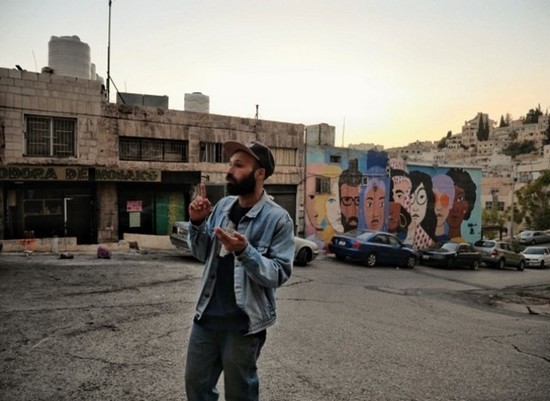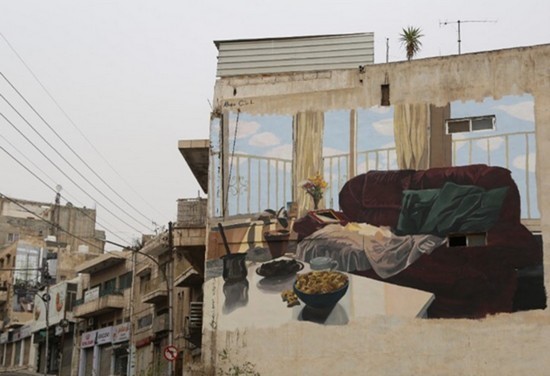The term “street art” may recall images of the modern city
and hip-hop culture, the artistic movement created by African and
Latino Americans in the Bronx, New York City. But since ancient times, from the
Nabateans to the Romans, public walls have served as key canvases for social
expression through paintings and engravings. Over the past decade, a new
generation of artists in the region have embraced this heritage, reviving it with
a modern outlook.
اضافة اعلان
Modern graffiti has adorned Palestinian streets since the
First Intifada, when it was used as a means of protest. Soon after, it spread
to Lebanon. In Egypt, street art gained traction after the revolution in 2011,
and in Jordan, it became prevalent about eight years ago in the aftermath of
the Arab Spring.
Before that, “drawing on walls was considered an act of
vandalism or maybe painting satanic or gang symbols”, explained Alaeddin
Rahmeh, hip-hop artist and co-founder of Underground Amman, a hip-hop
collective that offers graffiti tours of Jordan’s capital.
Since the graffiti scene first began to flourish in Jordan,
Rahmeh said he has “been glad to see this community-based movement growing and
attracting more and more young artists”.
In a decade, old streets and dull gray walls have become
covered with bright, flashy colors. Today, Jordan’s street art has found its
place and is seen as a style of its own.
In the Kingdom’s major cities, from Amman to Irbid, graffiti
and frescoes abound, imposing both diversity and ubiquity onto urban
landscapes. And municipalities do not object — instead, they regularly
encourage street artists. For instance, the
Greater Amman Municipality
subsidizes the Baladk Street Art Festival every year, welcoming many artists
from all over the globe.

Each wall tells a unique story, but a common narrative can
be traced across all artworks: appropriation and reappropriation of the space —
first by the artist, and then by the public.
Sending a message through art
In Amman, most street artists are women. One creator who
decks the capital’s public spaces in color is street artist Laila Ajjawi.
Through her art, Ajjawi, who also considers herself an
activist, intends to raise awareness on issues such as girls’ education, child
marriage, and gender-based violence, as well as explore the situation of
Palestinian refugees.
“I received many messages from girls, from Jordan and around
the world, telling me that what I’m doing is empowering them,” she said.
Like many street artists in Jordan, Ajjawi is self-taught.
Her background and personal experiences shape her work. “When I work on a
piece, I think of a huge responsibility that is directly on my shoulders. When
you paint, you always think about the message you want to send,” she said.
“It is never about just doing this for an aesthetic reason.”

As artwork created on fixed surfaces, graffiti should speak
to its locality in a unique way. Ajjawi said: “I take into consideration the
surroundings of where I am painting the mural, because there are differences
from one place to another.”
“You always have to blend into the society. Make it a part
of them so they can feel it,” the artist explained.
One unique aspect of street art is that after a work is
finished, it belongs to the public, not to the artist. “Once you finish a
mural, it’s not yours anymore,” said Ajjawi. “People could join it — anyone,
anytime.”
Gaining respect
While street art is now more accepted in Jordan, hip-hop
culture — including break dancing, DJ-ing, beatbox, and rap — rarely receives
the institutional recognition or prestige that is accorded to fine art.
Instead, it is a phenomenon that comes with stereotypes of violence, misogyny,
and idleness. To break down the walls of misunderstandings about street art
culture, Underground Amman launched the Zajal movement as part of the Emerging
Arts Project of the
National Gallery of Fine Arts’ Factory Platform. This
movement aims to exhibit and develop artistic and cultural expressions of
hip-hop.
On December 11, a gallery exhibition opened at the national
gallery, showcasing a timeline of the history of hip-hop in Jordan, while
highlighting challenges, achievements, and values of the hip-hop movement. The
exhibition will be on display through January 11, 2023.
Read more Lifestyle
Jordan News




